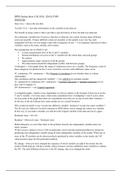Zusammenfassung
Summary SPSS instructions Causal Analysis Techniques (760435-B-4)
- Kurs
- Hochschule
SPSS instructions based on the practice excersices from the tutorials. A full list of steps that you need to be able to perform in order to run several tests in SPSS.
[ Mehr anzeigen ]



